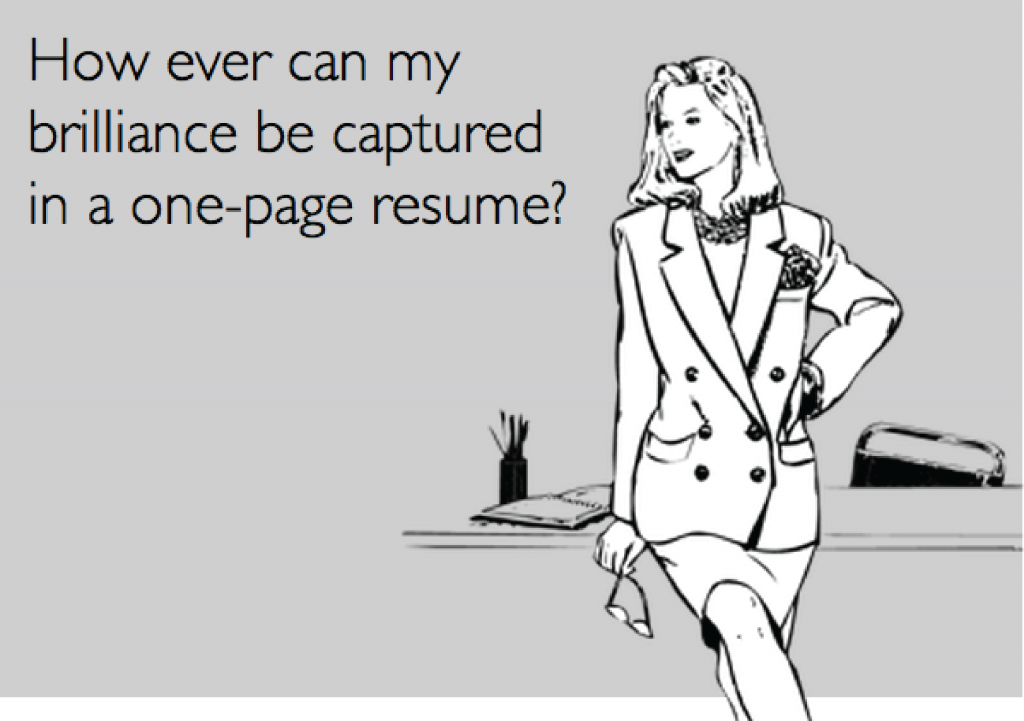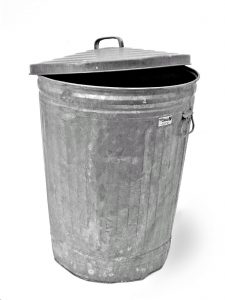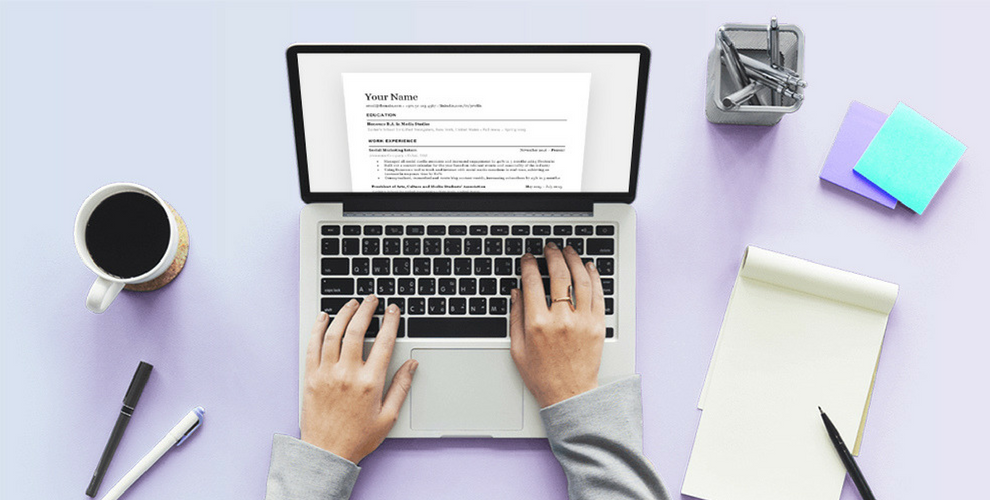Here’s a great piece of snarky wisdom from Blaise Pascal:
“I would have written a shorter letter, but I did not have the time.”
In other words, ain’t nobody got time to read a ten-page CV!
One page is not a lot of space and trying to lay out all of your awesome accomplishments from the last few years, in scalable detail, without exaggerating, in a single page is hard.
There are a lot of moving parts in a successful job hunting process:
- Searching for jobs
- Writing CVs and cover letters
- Throwing a tantrum about having to copy your entire resume into a job application form (what is up with that?!)
- Passing the phone-screenings and in-person interviews
- Walking out of the interview, trying not to think about that one awkward answer you just gave…
- Celebrating for making it to next round of interviews!
- Understanding visa requirements
- Sending follow up and thank you emails…
There’s a lot of stuff to get through while searching for jobs but one of the most important elements, if not the most important, is building a CV.
We know this is difficult and there are not a lot of resources to help you create a CV that fits with the workplace requirements of the Middle East.
So here’s what we recommend you keep in mind when creating or editing your resume.
1. Focus on structure and simplicity
Recruiters can go through hundreds of CVs and applications for a single job opening, on average glancing over a resume for six seconds. If the relevant details on your CV are not laid out simply, and structured in a way that is easy to follow, those six seconds may be cut down to zero.
We recommend using subheadings to your advantage, such as:
- Education
- Relevant experience
- Relevant coursework
- Skills
- Achievements
- Interests
Recruiters will use your most recent or current role to make harmless judgments about your skillset and the reason why you’re searching for a job.
Including line breaks or sections to separate out different sections helps recruiters scan through a CV and focus on the details that are most relevant to the opportunity they’re recruiting for.
And speaking of simplicity…
2. Keep it to one page

This is the general rule of thumb for the length of your resume: one page for every ten years of experience. As a student or a fresh graduate, your resume shouldn’t exceed one page ever. Seriously, we haven’t ever seen a CV for a student/grad that couldn’t be cut down to one page.
Even if you have a lot of extracurricular activities and internship experience, you should only mention the experiences that are relevant to the position you’re applying for (tailor your resume to the position you’re apply for, a bit like you would for your cover letter).
3. Skip the objective
Everyone knows your objective is to get a job. There’s no need to add that into your CV. Keep the focus on your education, experience, and skills. You’ll have plenty of space to detail your objectives and goals in your cover letter.
Here’s a favourite anecdote from Ambra Benjamin, Engineering Recruiter @ Facebook for things NOT to do:
“Listing an objective at the top of the resume — Dude, seriously? This isn’t 1992.”
4. Definitely skip the picture (but only on your CV)
Unless you’re applying to a job in the modeling or film industry, a photograph is not necessary on your CV. Most recruiters prefer a video CV over a picture as it demonstrates the candidate’s communication skills and personality – two things that recruiters definitely consider in their decision to hire.
However, as much as photos open you up to bias and are not in line with HR best practices, recruiters are pretty snoopy. It’s important to have a presentable photo on your online portfolios, such as LinkedIn, Twitter, etc.
No passport or full-length pictures. A casual picture of you smiling will do just great!
Here’s one of me 🙂

5. Avoid uncomfortably personal details
The only time a recruiter may need personal details is to process your work permits or visas. In all other scenarios, you should keep your passport number, marital status, home address, home phone number, birthday, and similar details OFF your resume. The HR manager is not going to be sending you flowers on your birthday (well, not before you’re hired anyway).
6. When you talk about your experience, make it active and measurable
Simply listing some tasks you did while volunteering or working on a team project is not enough. Recruiters go through hundreds of CVs every day and if they all look like this:
- Answered emails in timely manner
- Wrote blogs
- Helped animals at Feline Friends
- Worked with team in chemistry group project
Chances are, they’re all going to end up in here:

If your CV demonstrates no added value or makes no mention of your unique strengths and achievements, you will fail to stand out from the crowd of papers on a recruiter’s desk.
Providing concrete measures of your successes from your previous work/project/volunteer experience sets you apart from the rest, and no matter how small the accomplishments may seem, there is always something you can mention to differentiate yourself.
There’s no better explanation for how to do this than by Laszlo Bock, ex-Senior VP of People Ops at Google: “Start with an active verb, numerically measure what you accomplished, provide a baseline for comparison, and detail what you did to achieve your goal.”
A lot of recruiters use bots to search through applications for specific keywords they need in resumes.
If you have the relevant experience and interest, use those industry keywords in your resume – but don’t just list them!
This is how each of your bullet points should be structured:
Accomplished [X] as measured by [Y] by doing [Z].
Now let’s do a quick exercise to practice.
Say you’ve been a content writing intern at Oliv for three months, and every month you have been writing blog posts that cater to your three different audiences.
Here’s what your current resume says:
- Wrote blog posts
How would you improve this? For starters, by mentioning the scale of your work and audience:
- Wrote three blog posts every month for Company X’s stakeholders (job seekers, employers, universities), resulting in increased subscribers
To make it even better, you could add specificity about the measurable results:
- Wrote three blog posts every month for Company X’s stakeholders (job seekers, employers, universities), resulting in 40% increase in blog subscriptions within 6 months
The Good, the Bad, and the Awesome
Let’s take a look at a few more examples:
College student in a leadership position in college
- Bad: Helped with budget of university student union
- Good: Managed university student union budget of AED 15,000 for events
- Awesome: Managed university student union budget by chairing appropriations committee and successfully allocated AED 15,000 to 14 student clubs and 5 annual events, with budget surplus of AED 1,300.
Fresh engineering graduate
- Bad: Made RC car for Institute of Electrical and Electronics Engineers competition
- Good: Made the winning RC car with team members for Institute of Electrical and Electronics Engineers Competition 2016
- Awesome: Designed, as part of team, the winning RC car based on 60+mph speed, brake response, and range of movement, in Institute of Electrical and Electronics Engineers Competition 2016.
7. Proof-read everything
This is crucial. We know that not hiring someone over a single typo is silly, and it’s possible to miss out on some amazing candidates. For some jobs this matters much more than others, you could probably guess: editors, writers, lawyers, etc.
But there are some old school recruiters that use this as a strict rule no matter what. We recommend thoroughly proofreading your resume, double and triple check for typos, and have a trustworthy friend review and give suggestions.
8. Save & send as PDF
Always. Depending on word processors and font compatibilities, the layout of your resume might change – and end up looking like an unreadable jumble of letters. Sending it as a PDF makes sure your file remains the same for whoever opens it.
And there you have it! Now, get writing!
